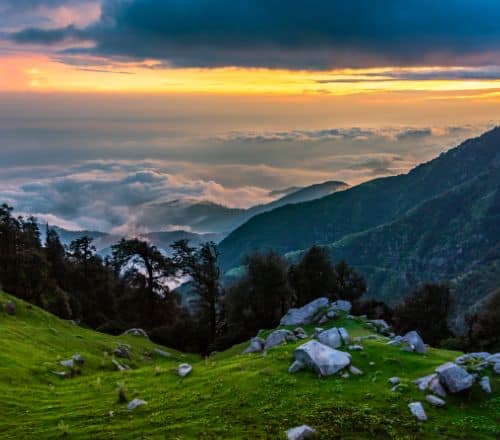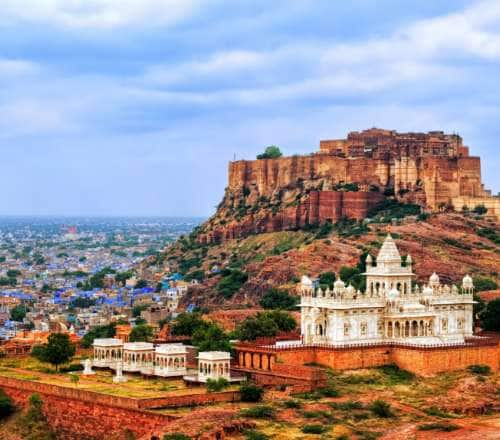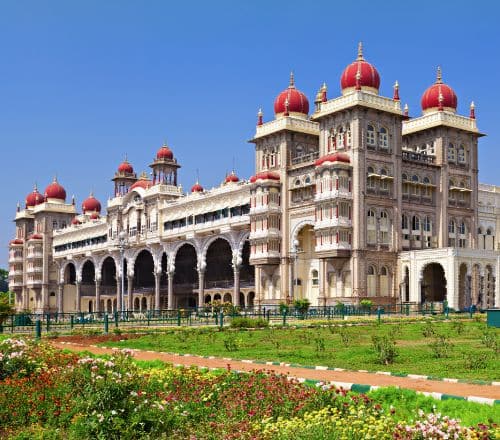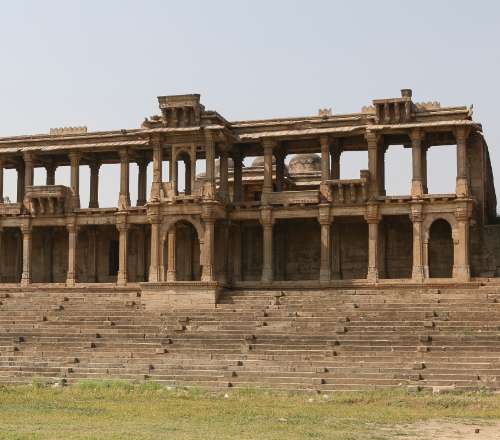Stay logged in to proceed with bookings, orders and offers.
On changing the terminal, you will loose items in your cart. Are you sure you want to change your terminal?
How Sarkhej Roza has transformed from a place of worship for the Sufi community into a tourist hotspot.
Preserving heritage buildings and safeguarding the essence of their culture are two distinct concepts. Merely identifying a building as architecturally significant is not enough; the real work begins when its history and cultural value are carefully passed down from one generation to the next. My recent visit to Sarkhej Roza prompted me to reflect on this deeply.
I was astonished to see the transformation it has experienced over the years. As I toured the place, I reflected on the dichotomy between selfie-taking, popcorn-munching tourists and the vision of the historical architects. At this point, I was thinking: how was Sarkhej Roza built and what did it look like at the peak of its splendour? How did the cultural significance of Sarkhej Roza change so much over the years?
From being a tiny village on the outskirts of Ahmedabad to becoming part of a heritage city, Sarkhej Roza has gone through a long journey of transformation. That was my first instinct when I entered the Sarkhej Roza complex. As soon as I entered the complex, I was in a different world. All I could see were tombs and mosques from the past, and I couldn't wait to learn their history.
I decided to start with the museum to arm myself with knowledge before the tour. The museum slowly uncovered the past, and I time-travelled to the age of Sufi saints and sultans.
It was the 15th century when Sultan Ahmed Shah was still ruling the Gujarat Sultanate. Back then, the hamlet of Sarkhej was populated with Hindu weavers and indigo dyers. The arrival of Shaikh Ahmed Khattu Ganj Baksh, who was the sultan's spiritual guide and friend as well as a venerated Sufi saint, blessed Sarkhej with his teachings. It was on this saint's suggestion that Ahmed Shah set up his capital on the banks of the Sabarmati river. The sultan passed away in 1442, and Ganj Bakhsh breathed his last at the age of 111 years – just three years after the death of his dear friend.
Ahmed Shah's successor Sultan Mohammad Shah wanted to honour the saint and his father's friend. He ordered that a tomb and mosque be built in memory of Ganj Baksh. Both monuments were completed in 1451 during the reign of Sultan Qutub-ud-din Shah. That is when the complex of Sarkhej Roza came into existence.
A carved stone gate led me to a tank resembling a stepwell. Even though there was no water in the stepwell, it looked beautiful with the elaborately designed pavilions on both sides. The story behind these structures goes like this: Sultan Mahmud Begada expanded the complex in the second half of the 15th century, adding a large central tank with steps, a few pavilions, and a small private mosque. He also ordered a mausoleum to be built for himself and his family opposite the tomb of the saint. Later, his great-grandson, his son, his queen Rajbai, and himself were buried there.
You may think that this is the history of almost every Islamic tomb in India. Then why is Sarkhej Roza exceptional? The most important reason is its remarkable architectural style.
Sarkhej Roza was meticulously planned and designed during the pre-Mughal era. It reflects a unique amalgamation of early Islamic style, influenced by Persian geometry, and Hindu as well as Jain artistry. The complex is an outstanding example of the Indo-Saracenic architectural style. The credit for planning and designing the mosques and tombs goes to two Persian architect brothers, Azam and Muazzam Khan. Their designs served as an inspiration for the construction of other buildings in the vicinity.
The windows of the mausoleum dedicated to Hazrat Shaikh Khattu Ganj Baksh impressed me the most. It has distinctive brass plates perforated with lacework designs that surround the saint's final resting place. I also noticed that the central dome of the tomb is topped with a peepal leaf.
After doing more research, I discovered that the peepal leaf was once the emblem of the Sultanate Dynasty's kings. The tomb continued to dazzle me when I noticed a piece of white marble with a Persian verse scripted on it at the entrance. I couldn't tell if the verse was written by the saint or if it was added to honour his noble life. From there, I walked towards the Jama Masjid which had a small gate opening out into a huge courtyard, with a passage supported by rows of columns. It was surrounded by gazebos on one side and a wall on the other. Sitting at the gazebo, I caught the view of the exterior of the alcoves chiselled into elaborate artwork.
Later, I began to wonder why Sarkhej Roza was compared to the Acropolis, as I couldn't see any similarities. But it wasn't until I got to the other side of the tank and saw the outer side of the mosque with slender pillars and structures with columned porticos of the Roza complex that I realised why the renowned Swiss-French architect Le Corbusier mentioned Ahmedabad having its own Acropolis.
I was awestruck by how the ringed domes of the Islamic west bracket and the jaali stonework with intricate motifs of Hindu design combine to make Sarkhej Roza a multi-ethnic cultural centre. After all, it was a place where both Sufi festivals as well as Garba, both were once celebrated.
I'd noticed photographs of these festivals displayed on the museum's walls. Not long ago, these festivals were held in the complex, with grand performances by illustrious figures as a tribute to Sufi culture. But it appears to be a thing of the past now. If I had to sum up the essence of the visit, I'd say that the three worlds of religion, royalty, and society meet at the complex of Sarkhej Roza. The mosque and tombs are of religious importance, palaces and pavillions served for royal activities, and the tank and courtyard are where the communities gathered.
Sarkhej Roza was once a prominent Sufi centre in India. That is another reason why it is so influential. The place and its architecture exude palpable vibes of Sufi teachings.
It's not just the architecture, but the aura of this place, which makes visiting the place an unforgettable experience. Once inside the complex, I forgot the humdrum of life and was forced to look upon the intangible. It is that feeling of serenity which draws visitors who come here to soak in the calm, peaceful atmosphere.
Due to the complex's plural ethnicity, it was the first time that I was allowed to enter the dargah here without covering my head. The blessings of the venerated saint are for everyone. I paid my respects and bought a piece of thread to tie at the window. Just like the million other threads tied there, my thread represented my hopes and wishes.
Sarkhej Roza does not usually see many visitors. But I visited the place on the pious occasion of Eid-e-Milad. So, the place was choc-a-bloc with devotees as well as tourists and their families. I also noticed that fewer people were inside the mosque and dargah and the majority of them were engaged in taking photographs. People sat in groups near the entrance, enjoying a picnic and relishing home-cooked food.
How the Acropolis of Ahmedabad had turned into a mere picnic spot! I wondered if people understood the importance of this place to pass on the knowledge to their children. Did they know of its cultural significance, or did they simply consider it a cool setting to spend an afternoon at? Whatever it is, the times are visibly changing for Sarkhej Roza. The complex is a protected monument under the Archaeological Survey of India (ASI) and is beautifully maintained by the Sarkhej Roza Committee. Yet, I believe that the complex is in dire need of not architectural but cultural restoration.





The Adani One expressly disclaims all liability, direct and indirect, in respect to actions taken or not taken based on any or all the contents of this Blog. The Blog is an opinion of the contributor based on the collation of data from various sources and is provided only for information purpose. Adani One does not canvass, advertise, solicit, invite or induct for any product, merchandise, information, brand or any other materials mentioned in the Blog, nor does it obtain any monetary benefit from the same. Reader is advised to read and apply his/her intellect and discretion in this regard. Any Intellectual Property mentioned in this blog belongs to the rightful owner. We do not intent to claim any interest over the same.